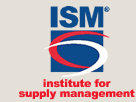Home > Education - Seminars, Conferences > Professional Development Services > Work Environment Simulations
Work Environment Simulations — Onsite Classroom Simulated Learning Interactions
Supply Chain Optimization: Putting It Into Practice (2-Days)
Learn how to structure the flow of information and materials from your suppliers to your customers from a strategic perspective. Gain an understanding of where the costs and problem areas reside, what alternatives are available and what it takes to put them into place. Identify key stakeholders and how to elicit their cooperation. Most importantly, learn how to measure the benefits to your organization. Using two business simulations, you will have the opportunity to work within multi-link supply chains in which you can try out your ideas and see how they work in practice. Success is measured by the resulting profit or loss.
It is recommended that supply management teams attend this seminar together. The learning interaction fosters an environment for teams to work together and design cross-functional solutions that apply to real-world challenges. This seminar is appropriate for cross-functional management teams because of the high-level, macro perspective that is provided. The emphasis is on what it takes to make supply chains operate well with an eye on the organization's profit/loss status.
The training simulation is a game where individuals assemble components to complete a finished product. During the exercise rounds, students identify and remove obstacles in the supply chain that impede efficiency, and improve service to both internal and external customers. Roles scan from sales to production, quality, and procurement. Total corporate inventory is calculated after each round in addition to other measures which include production efficiency, quality, and profit.
During the simulation training participants become employees of the Husky Truck Company. Training participants are grouped into work teams to act out various roles within the Husky Truck company, such as Engineer, Divisional Operations Manager, Purchasing Managers, Materials Manager, Plant Manager, Production Manager, and Quality Manager , just to name a few. They are then assigned various truck parts and company data. The designated work teams must work together to assemble the various parts into a trucks to sell to the marketplace. Each participant performs a role and key metrics are measured upon completion, including: Number of Autos Shipped, Number of Autos Rejected, Number of Autos Accepted and Paid, Level of Quality, Inventory Level, Profit and Loss. The instructor acts as the customer during the simulation and stipulates directives for the company to follow. The role playing simulation emphasizes negotiations with internal as well as external customers. It also demonstrates what some of the bottleneck problems are in working cross functional teams within a company and how to effectively solve and avoid them.
The duration of this onsite simulation is two (2) days. The minimum number of training participants is fifteen (15). The maximum number of training participants per session is thirty (30).
P-Strat — Unlocking Potential within Procurement Strategy Process (2 Days)
This learning interaction uses a unique computer based simulation in which four work teams develop and implement purchasing strategies in a real-time environment for a fictitious company. Each team gathers information, interacts with suppliers, analyzes spend, makes decisions and awards business. Teams compete against each other and each team's set of decisions impacts the market. Subsequent business decisions are made by each team throughout the simulation.
Since the learning interaction involves all facets and departments of a fictitious company in the decision making process, the training solution is ideal for cross functional work teams. Decisions from product market development to engineering and design to customer service affect the simulated buying decisions. Ultimately, the simulated buying decisions affect the performance of the fictitious company. An instructor introduces the simulation exercise and works throughout the two-day program to help participants learn from their decisions. Participants test their skills in gaining market intelligence, financial analysis, the impact of quality and supplier performance, and the presentation of a business case.
The duration of this onsite simulation is two (2) days. The minimum number of training participants is nine (9). The maximum number of training participants per each session is twenty- four (24).
Training Methodology Chart for Work Environment Simulations
| Work Environment Simulations | Learning Interactions | Learning Objectives |
|---|---|---|
| Supply Chain Optimization: Putting It Into Practice | Training class is divided into work teams that complete two role playing exercises. Engages the visual adult learner through interaction with team members and the assembly components of the program. Team members build a product and additional elements of the supply chain for a fictitious marketplace. |
|
| P-Strat | Training class is broken up into 4 fictitious companies; Participants receive company information and make business decisions from computer based information; Two (2) day role play exercise with three instructor lecture sessions in between computer based simulations. Engages the visual adult learning by interacting with the computer simulation to receive fictitious company data to analyze and make business decisions. |
|
Back to Main Professional Development Services Page
-
About ISM
- Overview of ISM
- Media Room
- ISM Board of Directors
- National Officers Directory
- Affiliate Officers Directory
- ISM Affiliate Web Sites
- ISM Group and Forum Web Sites
- Frequently Asked Questions
- Chair's Corner
- ISM Annual Reports
- J. Shipman Gold Medal Award
- ISM R. Gene Richter Awards
- Supply Management Month
- Association Governance
- ISM Ethical Principles and Standards
- Activity Calendar
- Principles of Social Responsibility
- Membership
-
Members Only
- InfoCenter
-
Member Information & Online Tools
- ISM Glossary of Key Supply Management Terms
- Access to CIPS Members Only Content
- ISM Tool Kit
- ISM Resource Guides
- ContractWare®Net and eTool Agreements
- Address Update Form
- Activity Calendar
- Affiliate Websites
- Group & Forum Websites
- ISM Principles and Standards of Ethical Supply Management Conduct
- ISM Group/Forum Enrollment Information
- Job Descriptions
- The Business Source
- Propurchaser.com
- Personal Professional Development Scorecard
- Affiliate Resources
- Career Center
-
Affiliate, Groups & Forums
- Group/Forum Enrollment Information
- Group/Forum Enrollment Form
- Groups & Forums Brochure and Flyer
- Group & Forum Case Studies
- Groups & Forums Promotion
- Spotlight on Groups and Forums
- Group and Forum Officers
- Affiliate Web Sites
- Group & Forum Web Sites
- Affiliate Officers
- National Officers
- Sign up for ISM's Groups and Forums Discussion List Servs
- Search for Speakers
- Discussion Forums
-
Additional Resources
- ISM Resource Guides
- Bid Specifications Database
- Purchasing/Supply Management Periodicals
- Other Web Resources
- Practix - A quarterly Best Practices publication
- ISM's Principles and Standards of Ethical Supply Management Conduct
- Associations/Organizations Useful to Purchasing/Supply Management Professionals
- CIPS Study
- Search Articles
- CIPS Members Only Content
- Ethics and Social Responsibility
-
Education - Seminars, Conferences
- Conferences
- Seminars
-
Professional Development Services
- Professional Development Seminars (Onsite)
- Knowledge Center Courses (Web-based Training)
- SMART, An ISM Assessment Tool
- Work Environment Simulations
- Blended and Customized Learning Programs
- Summary: Professional Development Program Formats
- Programs Tailored To Your Specific Needs
- Improve Your Organization's Capabilities
- About ISM Instructors
- Your Dedicated Program Managers
- Request for Professional Development Information
- Professional Development Resources
- Speaking Opportunities
- Speakers Directory
- Scholastic Opportunities
- Online Courses — Knowledge Center
- Glossary of Key Supply Mgmt Terms
- ISM Resource Guides
- ISM Tool Kit
- Exhibiting/Sponsorship Opportunities
- Products
- Publications
-
Professional Credentials
- Frequently Asked Questions
-
Certified Purchasing Manager (C.P.M.)
- C.P.M. Frequently Asked Questions (FAQs)
- C.P.M. Recertification FAQs
- How to Get Started on Your C.P.M. Designation
- C.P.M. Exam Registration Brochure (Download)
- C.P.M. Exam Information
- Register for the C.P.M. Exams Online
- Exam Specifications
- Study Materials for C.P.M. Exam
- Distribution of Questions Within the C.P.M. Exam
- C.P.M. Program Requirements
- C.P.M. Statement of Use
-
Certified Professional in Supply Mgmt
- Learn More About the Certified Professional in Supply Management (CPSM)
- CPSM Program FAQs
- CPSM Recertification FAQs
- Receive Email Updates About the Certified Professional in Supply Mgmt (CPSM)
- The CPSM will Prepare Supply's Future Leadership
- ISM’s Certification Market Study Supports New Qualification
- Accredited Purchasing Practitioner (A.P.P.)
- Certification Forms
- Credentials Discussion Forum
- Credentials Verification
-
Additional Program Information
- C.P.M. & A.P.P. Review Courses in ISM's Knowledge Center
- C.P.M. Onsite Testing and Review
- C.P.M. & A.P.P. Review Instructor Information
- C.P.M. & A.P.P. Program Overview - Powerpoint Presentation
- C.P.M. Exam Information
- C.P.M. & A.P.P. Study Materials
- International Certification Contacts
- Professional Development Scenarios
- Request a CEH Program Number
- Supply Line 2055: Certification Update
- Sign-up for Supply Line 2055: Certification Update
- How to Get Started on Your C.P.M. Designation
- ISM’s Certification Market Study Supports New Qualification
- The CPSM will Prepare Supply's Future Leadership
- International Certification Contacts
- Supply Line 2055: Certification Update
-
ISM Report on Business®
- Latest Manufacturing ROB
- Latest Non-Manufacturing ROB
- Reports on Business Overview
- Semiannual Reports
- Seasonal Adjustments
- Manufacturing Data
- Non-Manufacturing Data
- ROB Graphical Data
- Regional Business Survey Data
- How to Respond to ROB
- ROB Online Infokit
- JPMorgan Global PMI Reports
- Other Economic Information
- ROB Release Dates
- ROB Frequently Asked Questions
- ISM/Forrester Research Report
-
Career Center
- Your Profile
- Register for the Career Center
- Job Seekers
- Employers' Corner
-
More Career Resources
- ISM Affiliates that Offer Employment Services
- Job Descriptions
- Job Hunting Sites on the Web
- Job Hunting Sites for Specific Regional Areas
- Job Hunting Sites with Tools Such as Resume Writing Advice
- Careers In Supply Management
- Resources on Relocating
- Salary/Career-Building Resources
- Schools Offering Purchasing/Supply Management Courses
- Scholastic Opportunities
- Frequently Asked Questions
- CAPS Research
- Tools

- Conferences
- Seminars
- Professional Development Services
- Professional Development Seminars (Onsite)
- Knowledge Center Courses (Web-based Training)
- SMART, An ISM Assessment Tool
- Work Environment Simulations
- Blended and Customized Learning Programs
- Summary: Professional Development Program Formats
- Programs Tailored To Your Specific Needs
- Improve Your Organization's Capabilities
- About ISM Instructors
- Your Dedicated Program Managers
- Request for Professional Development Information
- Professional Development Resources
- Speaking Opportunities
- Speakers Directory
- Scholastic Opportunities
- Online Courses — Knowledge Center
- Glossary of Key Supply Mgmt Terms
- ISM Resource Guides
- ISM Tool Kit
- Exhibiting/Sponsorship Opportunities




